
Commanders!
This month in our Branch of the Month series is dedicated to the American Main Battle Tanks. The Americans have a long and proud tank tradition.
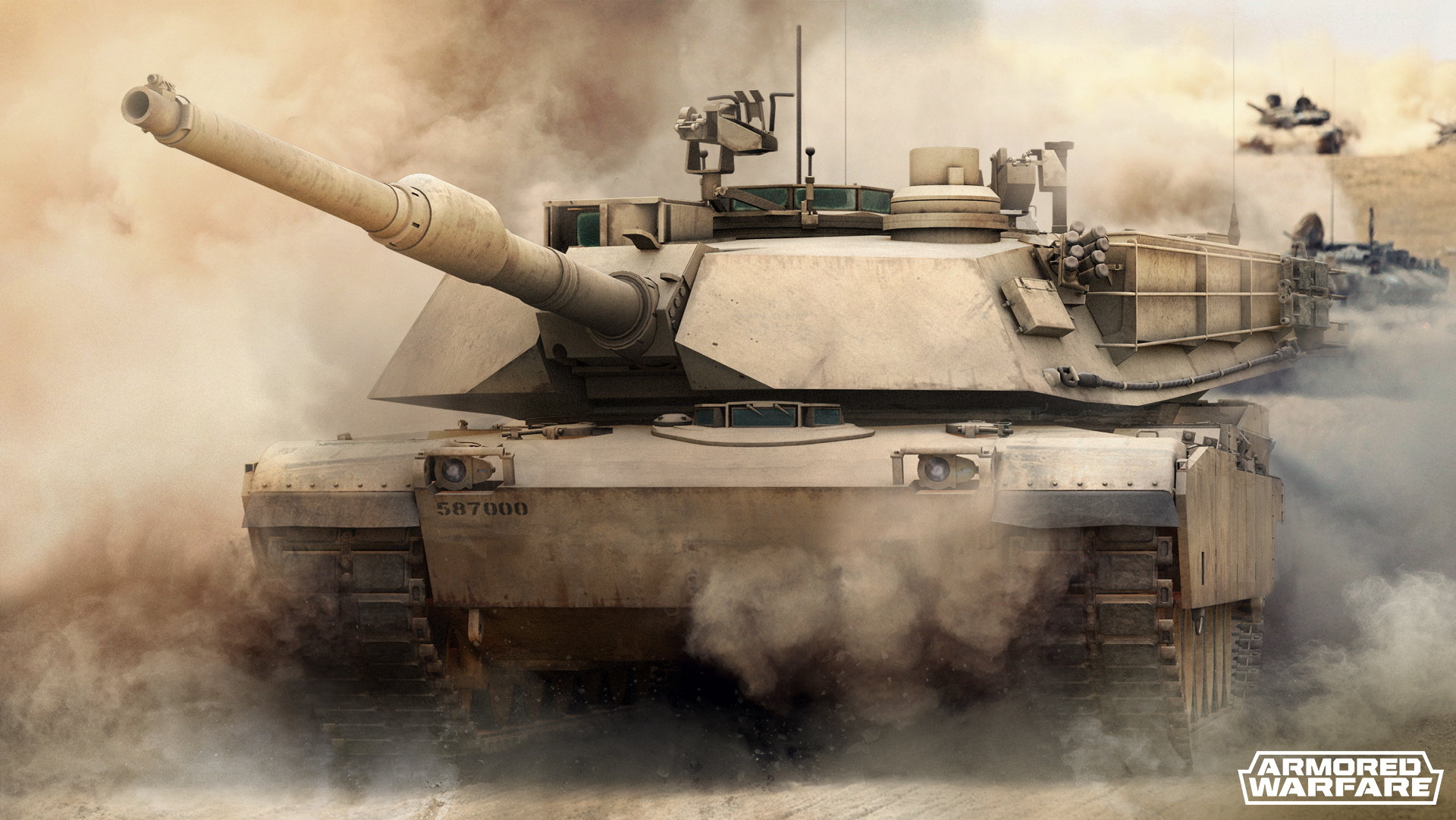
They started a bit slow in the Second World War, armed with obsolete light tanks, the oldest of which went back to the closing days of the First World War. That wasn’t, however, something unusual – in fact, by 1939-1940, many countries, including the French themselves, were still armed with large numbers of the legendary Renault FT Light Tank. When the Great War ended, this tiny tank was one of the most advanced weapons on the battlefield, pioneering the entire concept of manned traversable turret with engine in the back, but by the beginning of the Second World War, it was hopelessly obsolete with its small 37mm gun unable to penetrate the armor of modern German war machines. The Americans adopted it under the name of M1917 and still kept it in service two decades later along with other generally obsolete vehicles.
Then came the Japanese attack on Pearl Harbor and everything changed – America started doing what America does best to this day: produce and innovate. Fifty thousand Sherman tanks and two nuclear drops later, it was clear that a true superpower was born and it was here to stay. During the four wartime years, the United States tank fleet saw the same progress as the wartime armies of Europe. Where the Soviet Union upgraded from the tiny, old T-26 tanks (interwar Vickers copies) to the mighty T-34 and IS-2 tanks, the Americans switched from such vehicles as the obsolete T2 Light Tank over the M3 Medium tanks (commonly known as “Lee” or “Grant” in their British version) to the legendary M4 Sherman, arguable the best tank of the Second World War.
The Sherman was one of those tanks that weren’t the best in the world in anything. It wasn’t the most armored tank, it didn’t have the biggest gun, nor was it the fastest. What it did have was the best combination of firepower, armor, mobility and crew comfort. Contrary to popular belief, even its 75mm gun was sufficient against practically anything the Germans could muster, including the dreaded Tiger tank. Its protection was also solid, practically on the Tiger level thanks to its armor sloping. Unfortunately, the Sherman received some bad post-war reputation due to inaccurate books like the infamous Death Traps by Belton Cooper, but in reality, it was a great tank that was widely exported during and after the war.
But, as with all things, even the Sherman grew somewhat obsolete by the end of the war despite several upgrades such as the long American 76mm gun that surpassed its famous German 75mm Panther counterpart in many aspects. A new tank was needed to serve during what became known as the Cold War – a stand-off with the Soviet Union accompanied by a number of proxy wars. The Sherman continued to live on but the Americans themselves needed something better.
During the closing days of the Second World War, the new American M26 Pershing tank came in service. Armed with a powerful 90mm gun, it could take on practically anything it encountered. It was built with the American tradition in mind – it was big, loud and powerful. Initially, it was even designated as a Heavy Tank for morale purposes, but it really wasn’t in the same weight class as the 70-ton Tiger II. Its armament was, however, on par with the heavies.
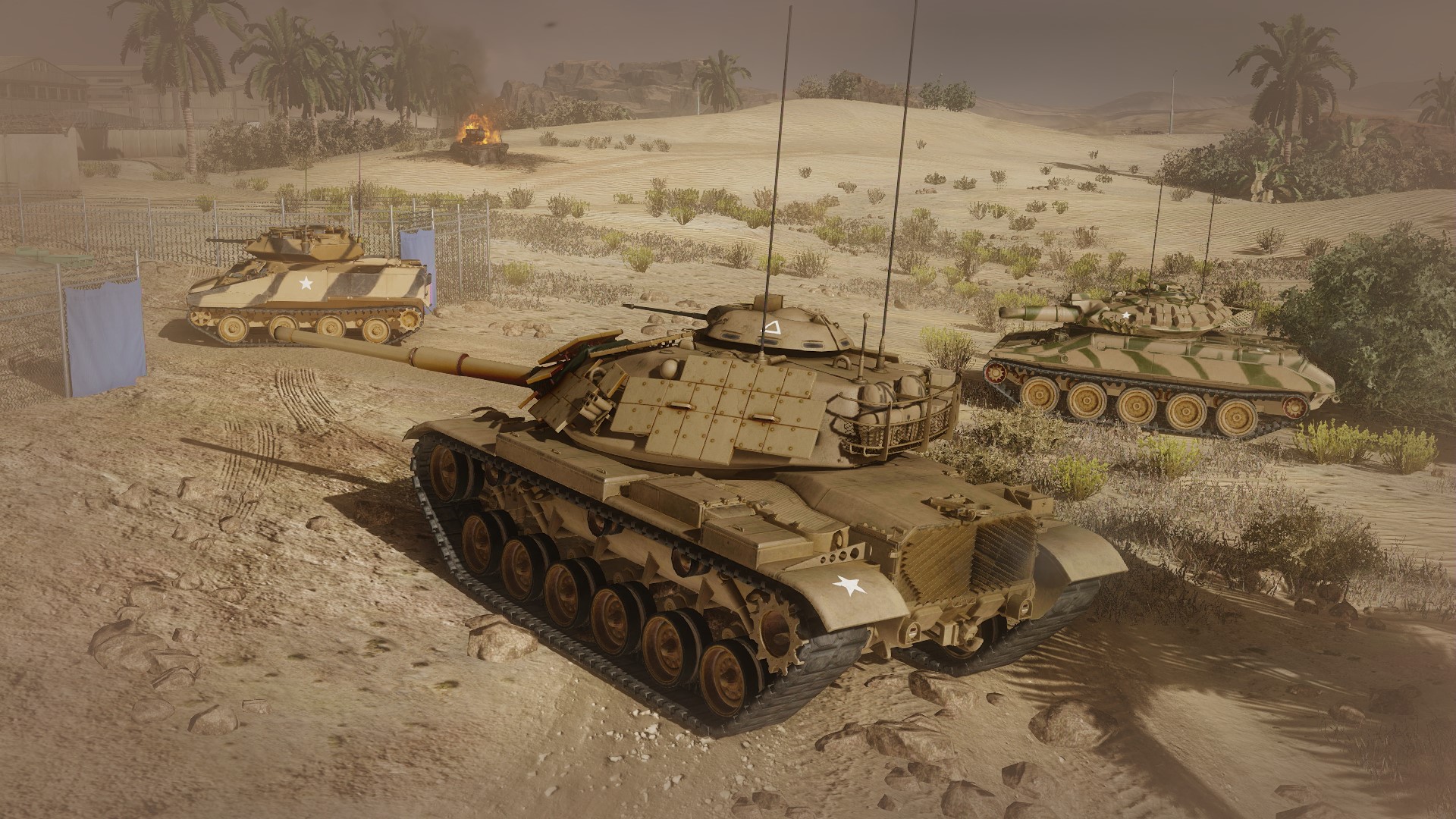
Speaking of the heavies, the Americans produced a number of Heavy Tank prototypes during the war but, unlike the Germans and the Soviets, they were never really happy with them and didn’t actively deploy them. Heavy Tanks were always situational in their eyes. They weren’t really “required” for anything per se (the fear of breaking through the Siegfried line crumbled along with the remnants of the German forces), they only represented logistical difficulties and the American Medium Tanks along with artillery and combined arms tactics in general could take out any German forces anyway, so why bother. The American Heavy Tanks ended with the M103 in the 1950s.
Back to the American Medium Tank post-war history – the launch of the M26 Pershing was important because it represented the start of a line of development of a tank that lasted in service over four decades – the M47/M48/M60 Patton series.
Where the American post-war tank forces are often represented by an image of the Abrams MBT, it was the Patton that was the real American workhorse. Unlike the Abrams, the Patton tanks were widely exported to NATO countries and beyond, effectively becoming the western equivalent of the Soviet T-55 and T-72 series (although they were not produced in such numbers). All the Patton tanks and their M26 Pershing predecessor shared some basic similarities:
- They carried a NATO caliber gun (90mm and later 105mm)
- Their armor was steel only (composite armor only came with the M1 Abrams)
- They had a crew of four men (the gun was always manually loaded)
- They were initially powered by petrol engines, only switching to diesels later on
All in all, around 30 thousand M47/M48/M60 Patton tanks were built. They were solid vehicles, fully capable of defeating the Soviet tanks (and they did, especially in the Israeli hands), but they also had drawbacks. They were tall, the petrol versions were fuel-thirsty and, starting from the mid-1960s, their all-steel armor was inferior to the composites used by the Soviet MBTs. The Pattons were also vulnerable to guided missiles and, despite the development of explosive reactive armor, they were never really able to catch up to modern Soviet designs.
The Americans did realize this and felt the need for a new Main Battle Tank to replace the aging Patton series. It was decided to co-develop this new tank together with West Germany. The goal was to produce a cutting edge tank that would beat anything on the battlefield. It was to be ready for the 1970s, which is why it was called MBT-70 by the Americans and Kampfpanzer-70 by the Germans.
It was a total disaster. Three hundred million dollars and a decade of development later, the program was cancelled in 1969. The MBT-70 prototypes featured many experimental technologies and were not only unreliable, but way too expensive to be practical. The Germans had quite enough of that program and decided to develop the Leopard 2 instead, while the Americans stuck around with it for two more years (the XM803 tank) only to finally cancel it in 1971.
The MBT-70 was an important, if costly lesson that convinced the Americans that cramming the future tank with all the experimental tech they could get their hands on was not exactly the best idea ever and that a standard Main Battle Tank that would use modern technologies (just not TOO modern) but, most importantly, would be affordable. The result of this line of thought was one of the most iconic American vehicles ever produced, the M1 Abrams series.
The first prototypes of the XM1 (previously XM815) were delivered by Chrysler Defense and General Motors in 1976. Both were armed with a M68 105mm rifled cannon. However, the General Motors vehicle was powered by a diesel engine, while the Chrysler Defense prototype was powered by a newly-developed turbine engine. Chrysler had a lot of experience designing turbines, ever since the 1950s, and was confident in the superior abilities of this new propulsion type. Turbine-propelled tanks were nothing new, some of the first attempts date back to World War Two, but the Abrams and the T-80 were the first tanks to use the turbine on a mass-produced scale.

Following comparative trials with a special Leopard 2 variant (Leopard 2AV), Chrysler's XM1 was selected as the future U.S. Army Main Battle Tank. It was named after General Creighton Abrams, who commanded American armored forces in both World War Two and the Vietnam War. Production ran from 1979 and around 10 thousand Abrams Main Battle Tanks of various versions have been built to date.
The M1 Abrams is a classic Main Battle Tank with a 4-man crew (commander, gunner, loader, and driver). Its weight ranges from 54 tons for the original M1 to 62 tons for the up-armored M1A2. The tank is 9.77 meters in length with the gun facing forward, 3.66 meters in width and 2.44 meters in height.
Its Chobham-type armor is a major upgrade over the steel of its predecessor. American development of this type of armor goes back to 1973 when representatives from both Chrysler and General Motors visited the United Kingdom to witness its manufacturing process. This experience led to major changes in the design of both prototypes. Steven Zaloga, a U.S. military historian, estimates that the frontal armor protection of the basic Abrams is equal to 350mm RHAe versus kinetic rounds and 700mm RHAe versus HEAT rounds, but Soviet sources estimated that the protection was even higher. In the later Abrams versions, the already considerable Chobham protection was further enhanced by the introduction of depleted uranium armor elements, starting in 1988 with the M1A1. This increased its protection to as much as 600mm RHAe versus kinetic rounds and 1300mm RHAe versus HEAT rounds. There are Abrams variants both with and without the depleted uranium elements and the export Abrams tanks typically lack it. The newest protection addition includes Explosive Reactive Armor sets as part of the Tank Urban Survival Kit (TUSK) with the purpose of making the vehicle more durable in urban environments versus RPG-type weapons.
The Abrams can also be equipped with a soft-kill active protection system (AN/VLQ-6 Missile Countermeasure Device) that interferes with the guidance system of certain guided missile types by emitting a strong infra-red signal that can confuse the IR-seekers. The Abrams' internal design ensures maximum crew safety by containing the blasts in uninhabited areas protected by armor. The crew can thus survive even catastrophic damage that would mean certain death in other, less-protected, vehicles. For example, during ammunition cook off the force of the explosion is directed outside thanks to the blowout panels implemented in the ammo compartment design. The Abrams is also equipped with a halon automated fire-extinguishing system.
The first version of the Abrams was armed with a 105mm M68 rifled gun. While an effective weapon, the need to increase firepower when facing advanced Soviet designs led to its replacement in the late 1980s with the German designed 120mm L/44 Rheinmetall smoothbore. In the Abrams, the gun was designated as M256 and it remains the current main armament of the vehicle to this day. Just like the M68, the M256 gun is manually loaded by the loader, retrieving shells from the rear of the turret. It can fire both kinetic (APFSDS) and multi-purpose HEAT rounds that can also be used against soft targets due to their explosive charge.
In addition to the main gun, the Abrams is equipped with three machine guns – the Browning M2 .50 caliber on the top of the turret in front of the commander's hatch, the 7.62mm M240 at the loader's hatch and a coaxial 7.62mm M240. Another CROWS system remotely-controlled heavy machine gun can be added to the turret as part of the TUSK kit.

The Abrams is powered by a 1500hp Honeywell AGT-1500 multi-fuel gas turbine and a six speed (4F/2R) Allison X-1100-3B Hydro-Kinetic automatic transmission. This engine enables the Abrams to go as fast as 72 km/h on hard surface or 48 km/h cross-country, but higher speeds have been reached by removing the speed governor. The turbine can run on multiple types of fuels including kerosene, diesel or gasoline – this ability was implemented to simplify logistic requirements. The most commonly used fuel in the U.S. Army is the JP-8 jet fuel, while Australian Abrams tanks run on diesel. The engine emits a distinctive whistling sound and is less noisy than the older variants of tank diesel engines, which earned the Abrams its popular "Whispering Death" nickname during its first REFORGER exercise. Unfortunately, this type of engine does have its drawbacks with fuel consumption being somewhat higher compared to diesel engines of equal power. However, this issue is far less prevalent than the criticism of it would suggest.
There are three major variants of the Abrams:
- The original M1 Abrams
- M1A1 Abrams (4976 built for the U.S. Army, 221 for USMC, 755 for Egypt, 59 M1A1 AIM SA sold to Australia), with several upgrades including optional depleted uranium and a M256 120mm gun
- M1A2 Abrams (most of these were actually upgraded M1/M1A1 tanks, the differences being more advanced fire control systems and second generation depleted uranium armor)
Each of these variants has a large number of sub-variants with the most advanced M1A2 version being upgraded to several System Enhancement Package standards and with a TUSK armor kit.
The Abrams became one of the most famous tanks in the world, following its stunning performance during Operation Desert Storm and the Iraq War. Around 2000 Abrams tanks were deployed to Iraq during the Gulf War and the Abrams outperformed all its Soviet-made opponents. While the stunning success in Iraq was the result of combined arms tactics and not the vehicle alone, the speed with which possibly the strongest military of the region was crushed by the Americans deeply shocked both Russia and China, leading (amongst other things) to the development of the next generation of Main Battle Tanks. That is not to say that the Americans did not consider switching the Abrams for something different, including a brand new Main Battle Tank. In the 1980s, a number of interesting projects was developed, such as the “Thumper” or the CATTB, an automatic loading mechanism for the Abrams or even a massive 140mm gun. These development programs were, however, mostly cancelled with the end of the Cold War as the perceived threat of a future Soviet Main Battle tank ended.
And so, the Abrams continues to soldier on. Recently, a new version of the Abrams (named SEP V3) was introduced to public and the development of a replacement for the existing Abrams tank variants (commonly known as the M1A3) is scheduled to start around 2020-2025.
From December 1 to December 31 2017, the following American MBTs will be available for lower price than usual:
M60 Tier 3 MBT – the M60 was the attempt to upgrade the M48 Patton to carry more firepower. It was accepted in service in March 1959. The vehicle still resembled the older M48 series with its round turret, but featured a number of improvements, the chief amongst them being the 105mm M68 rifled gun. Over 2200 were built and deployed in Europe from 1960, but none of them saw combat. You can read more about it in our dedicated article.
- Discount: 35%

M60A1 Tier 4 MBT – the M60A1 was an upgraded M60 Main Battle Tank. It’s visually distinctive from its predecessor by its new, narrow turret with enhanced protection. Introduced in 1961, it became the main American MBT model until the introduction of the M60A3 and the Abrams, participating in multiple conflicts, most famously in Operation Desert Storm in USMC hands. You can read more about it in our dedicated article.
- Discount: 35%
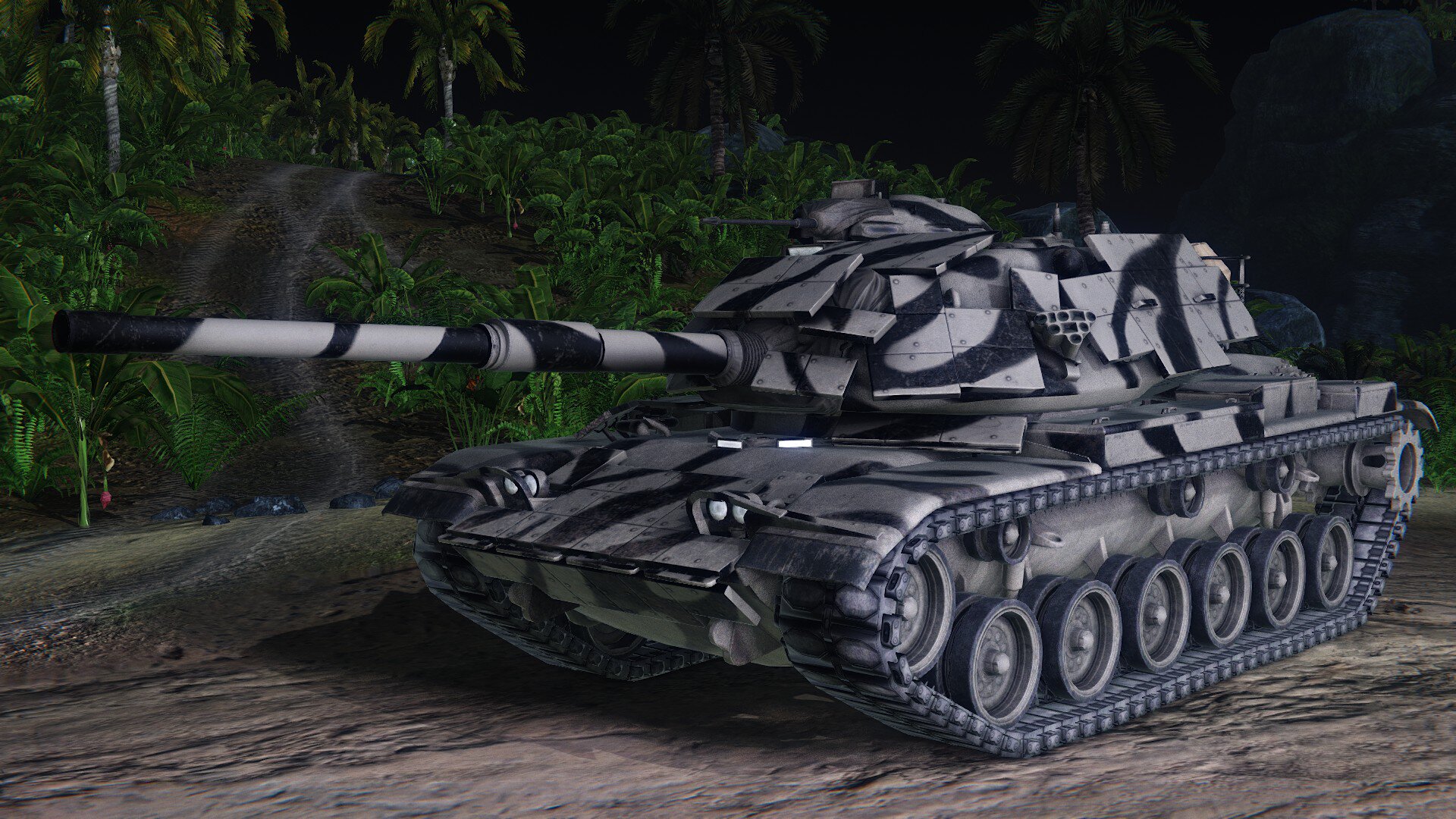
M60A2 Tier 5 MBT – the M60A2, sometimes unofficially called “Starship” was an attempt to upgrade the Patton series with what had been perceived as the future of tank combat: a combination of large caliber but short gun-launcher and guided missiles. It wasn’t a successful design – its complexity and reliability issues led to it quickly being phased out. You can read more about it in our dedicated article.
- Discount: 35%

M60A3 Tier 5 MBT – the M60A3 was the final mass-produced variant of the M60 series. It was basically a M60A1 with a new fire control system and other smaller upgrades. This variant stayed in American service until it was eventually completely replaced by the Abrams in 1997. You can read more about it in our dedicated article.
- Discount: 35%

M1 Abrams Tier 6 MBT – this is the initial version of the iconic American Abrams tank series. The Abrams was initially armed with the older 105mm M68 gun. A potent, fast and superbly armored tank, its only real drawback was its fuel consumption. Over 3000 were built between 1979 and 1985.
- Discount: 35%
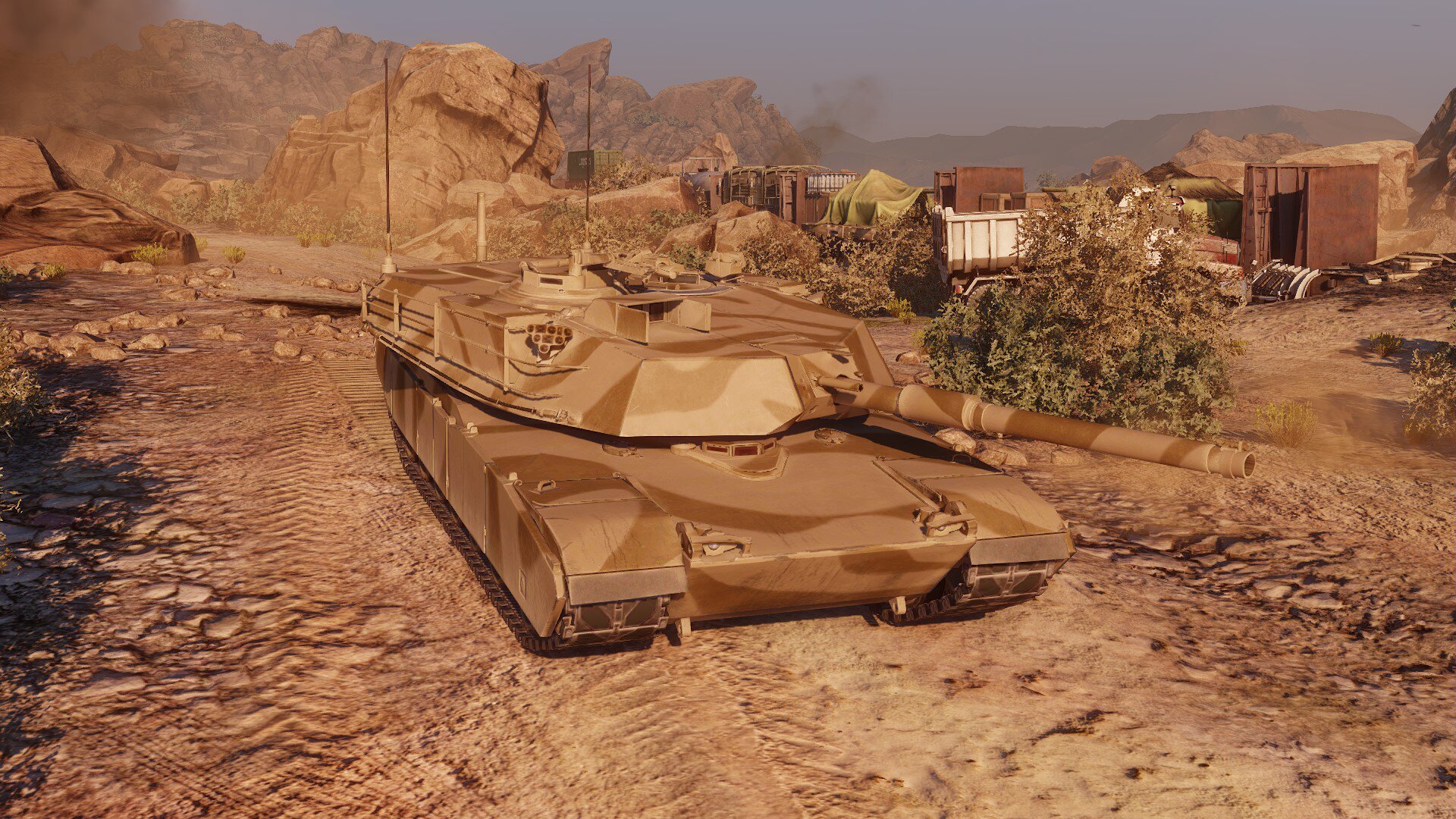
M1A1 Abrams Tier 7 MBT – in 1985, the Abrams was upgraded with, amongst other things, the 120mm M256 smoothbore cannon. Over 5000 were produced until 1992. This tank participated in Operation Desert Storm, which forged its legendary reputation.
- Discount: 25%
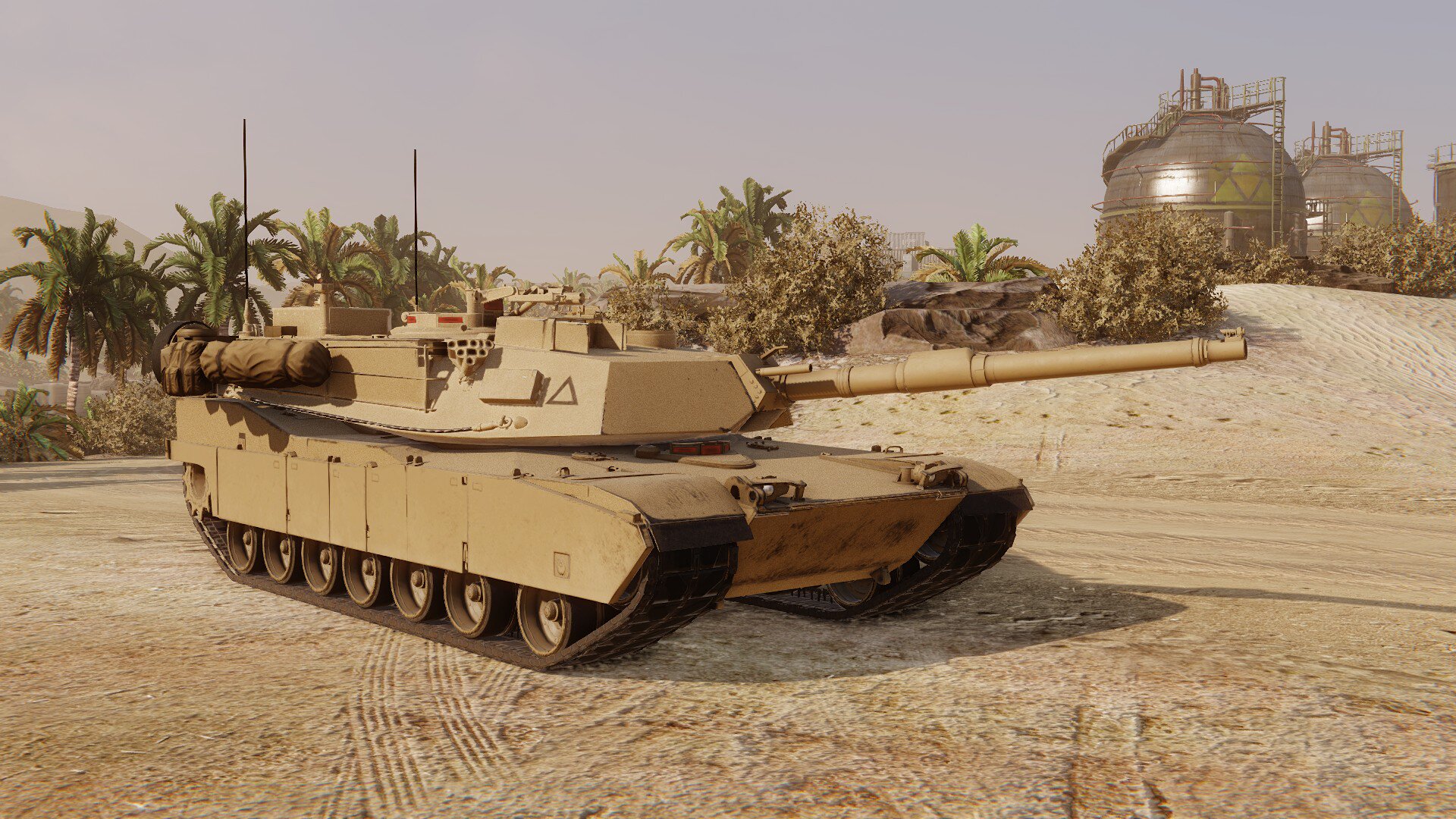
M1A2 Abrams Tier 8 MBT – entering service in 1992, this new variant was upgraded from the older Abrams tanks by introducing new generation of depleted uranium armor, independent thermal optics for the commander and other improvements to the design. With an upgrade kit called System Enhancement Package, this is the most modern Main Battle Tank of the U.S. Army.
- Discount: 25%

M1A2 SEP V3 Tier 9 MBT – this is the latest, cutting edge version of the Abrams, featuring even more upgrades to its electronics as well as a remotely-operated machinegun turret in a single comprehensive package, prolonging the life of the aging design by another decade or two. Its deployment is scheduled to start at the end of the decade. You can read more about it in our dedicated article.
- Discount: 20%
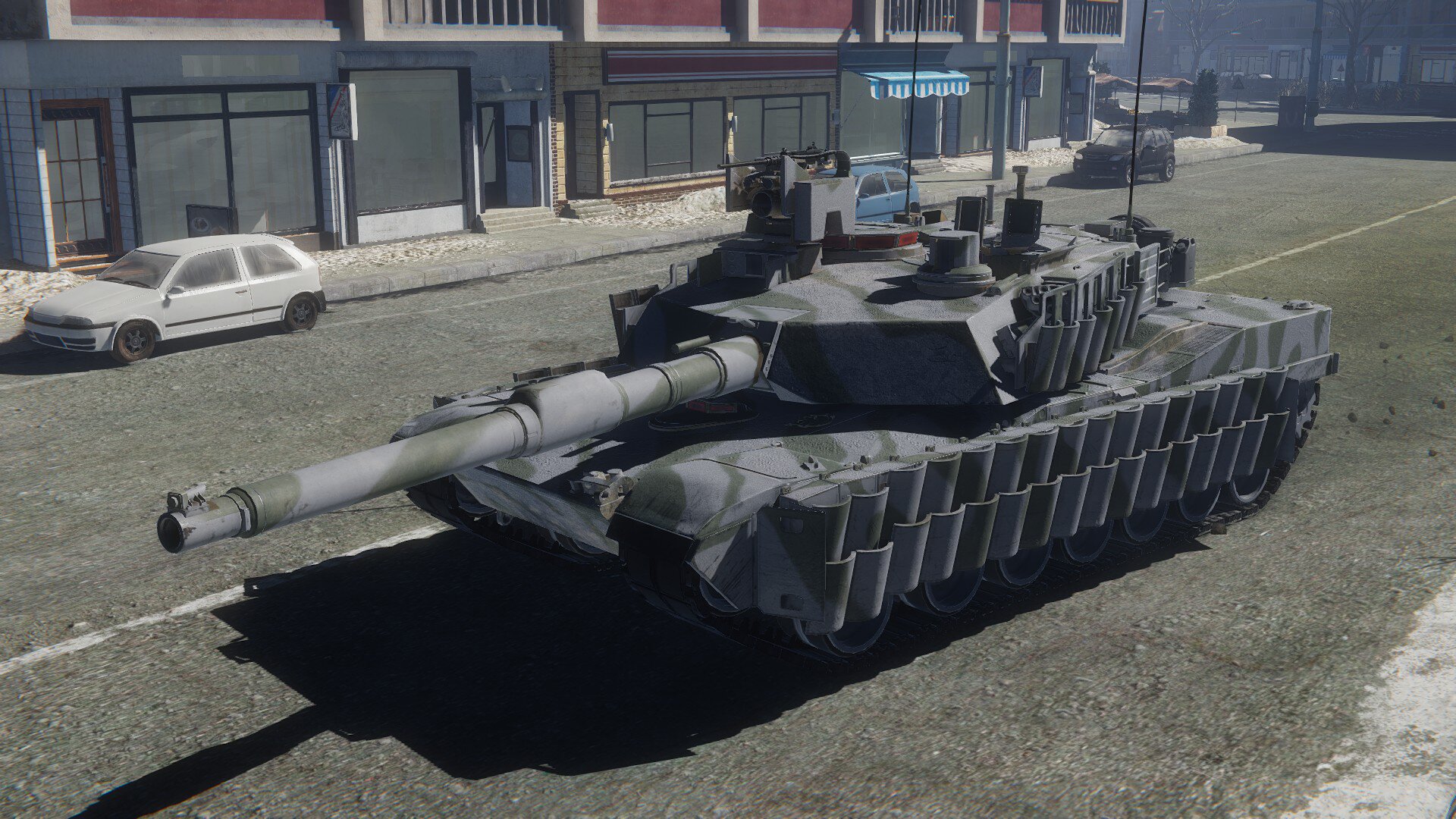
XM1A3 Tier 10 MBT – this is the vision of Armored Warfare developers of how the experimental new generation Abrams could look like. It consists of multiple upgrades that were developed in real life, such as the Fastdraw automatic loading mechanism or the massive 140mm cannon, developed for the next generation of American Main Battle Tanks. You can read more about it in our dedicated article.
- Discount: 15%

In Armored Warfare, American tanks are the baseline of the Armored Warfare MBT class. They are the jack-of-all-trades of MBTs but also masters of none. Their armor is average and so is their firepower in the form of standard NATO tank 105mm rifled and 120mm smoothbore cannons. The iconic Abrams tanks offer solid protection and maneuverability but can be outgunned by the Leopards and outmaneuvered by the high-Tier Russian vehicles. They do not have any significant drawbacks, although the low-Tier vehicles (M48 and M60 series) lack composite armor (unlike the Soviets) and are therefore more vulnerable to HEAT rounds and guided missiles. The protection level only becomes good with the M1 Abrams. One outlier that’s worth mentioning is the M60A2 Starship, offering excellent firepower in the form of its 152mm cannon as well as the ability to fire guided missiles on its tier, but slow reload times and mediocre protection.
American generally use manually loaded guns – with full crew training, they can fire faster than automatically loaded guns, but with untrained crews they do lag behind. Due to this fact, the American vehicles have crews of four men.
The XM1A3 offers a unique choice between a powerful automatically loaded 120mm M256 FASTDRAW cannon (2 shots in quick succession) and a 140mm cannon with high damage per shot and penetration but slower reload.
Firepower-wise, the American vehicles have several advantages over the other nationalities. For one, they have better gun stabilization than other MBT branches – in other words, they can fire more accurately on the move, regardless of whether they are turning or just going forward.
Secondly, unlike other MBTs, the American tanks (specifically the Abrams series) generally lack High-Explosive ammunition and gun-launched missiles. This can be a downside during certain situation, but the high-Tier Abrams tanks have a special type of ammunition instead – the HEAT-MP, a round that works both like a HEAT and a HE round.
The American MBTs are ideal for you if you are still deciding what play style you prefer or are a new player. They are quite forgiving to mistakes and at the same time capable of excellent results, although experienced players will ultimately perform better in specialized vehicles.
We’ll see you on the battlefield!








